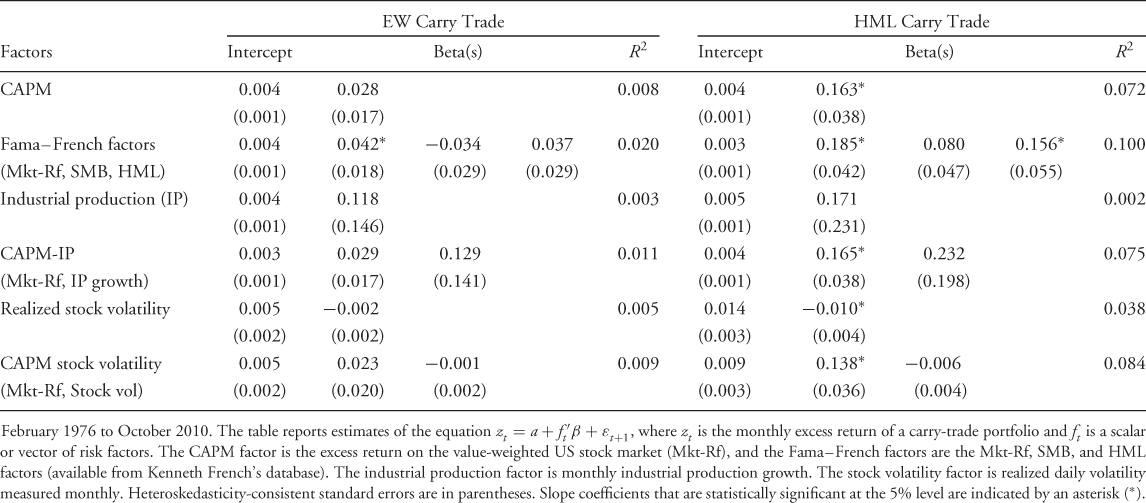10.4 Empirical Findings
In this section, I use the empirical methods outlined in the previous section to determine whether there is a candidate SDF that can price the returns to the carry trade. I begin by studying risk factors that have traditionally been used to explain stock returns. These include the CAPM, the Fama–French three factor model, models in which industrial production growth and stock market volatility are used as risk factors, and consumption-based models. I show that none of the SDFs specified in terms of these traditional risk factors explains the returns to the carry trade. I then turn to less traditional models in which the risk factors are, themselves, derived from currency returns. These models have varying degrees of success in pricing carry-trade returns.
10.4.1 Traditional Risk Factors
Models for Monthly Returns
Table 10.2 summarizes the results of running time-series regressions
Table 10.2 Monthly Factor Betas of the Carry-Trade Portfolios

described by Equation (10.20) for monthly models. Consider, first the CAPM model, which uses the market excess return as a single factor. For the EW carry-trade portfolio the beta is statistically insignificant. It is also economically small. To see this, consider that in order for the CAPM model to explain the return to holding the value weighted US stock market, the annualized value of λ must be approximately equal ...
Get Handbook of Exchange Rates now with the O’Reilly learning platform.
O’Reilly members experience books, live events, courses curated by job role, and more from O’Reilly and nearly 200 top publishers.

